Learning the notes on your guitar’s fretboard is a foundational skill that unlocks a deeper understanding of music and your instrument. While the fretboard might initially seem daunting, grasping the notes is simpler than you think. With focused practice and a few clever techniques, you’ll be navigating the fretboard with confidence in no time. This guide will break down the essentials, making learning guitar notes accessible and enjoyable.
Understanding the Natural Musical Alphabet on Guitar
The first step to mastering Notes On The Guitar is familiarizing yourself with the musical alphabet. Unlike the standard alphabet, the musical alphabet only consists of seven natural notes: A, B, C, D, E, F, and G. These are considered “natural” because they don’t include sharps or flats. Sharps and flats, which we’ll discuss next, exist in between these natural notes. Once you understand these core seven, learning the complete range of notes becomes a straightforward process of moving up or down in half steps.
 The Musical Alphabet
The Musical Alphabet
Sharps and Flats: Expanding Your Note Vocabulary
Sharps (♯) and flats (♭) represent notes that are a half-step away from the natural notes. A half-step on the guitar is simply moving one fret up or down.
- Sharps (♯): A sharp is a half-step higher than a natural note. For example, A sharp (A♯) is one fret above A.
- Flats (♭): A flat is a half-step lower than a natural note. For instance, A flat (A♭) is one fret below A.
It’s important to note that the same note can sometimes be called by two different names (enharmonic equivalents), depending on the musical context or key you’re playing in. For example, the note between D and E can be referred to as D sharp (D♯) when ascending or E flat (E♭) when descending.
 Sharps & Flats
Sharps & Flats
Quick Tip: Visualize sharps as going up in pitch and flats as going down in pitch. This can help you remember their relationship to natural notes.
The B-C and E-F Rule: Natural Half Steps
An essential rule to remember is that there are natural half-steps between B and C, and between E and F. This means there is no sharp or flat note between these pairs. Moving a half-step up from B takes you directly to C, and moving a half-step down from F takes you directly to E. This is a crucial detail for accurately navigating the fretboard.
Open String Names: Your Starting Point
In standard guitar tuning, the six strings, from thickest to thinnest, are tuned to E, A, D, G, B, and E. Playing a string “open,” meaning without pressing down any frets, produces these notes. These open string notes serve as your initial reference points for learning notes on the guitar. Notice that both the thickest (lowest E) and thinnest (highest E) strings are tuned to E, which means the note patterns will repeat across the fretboard, simplifying the learning process.
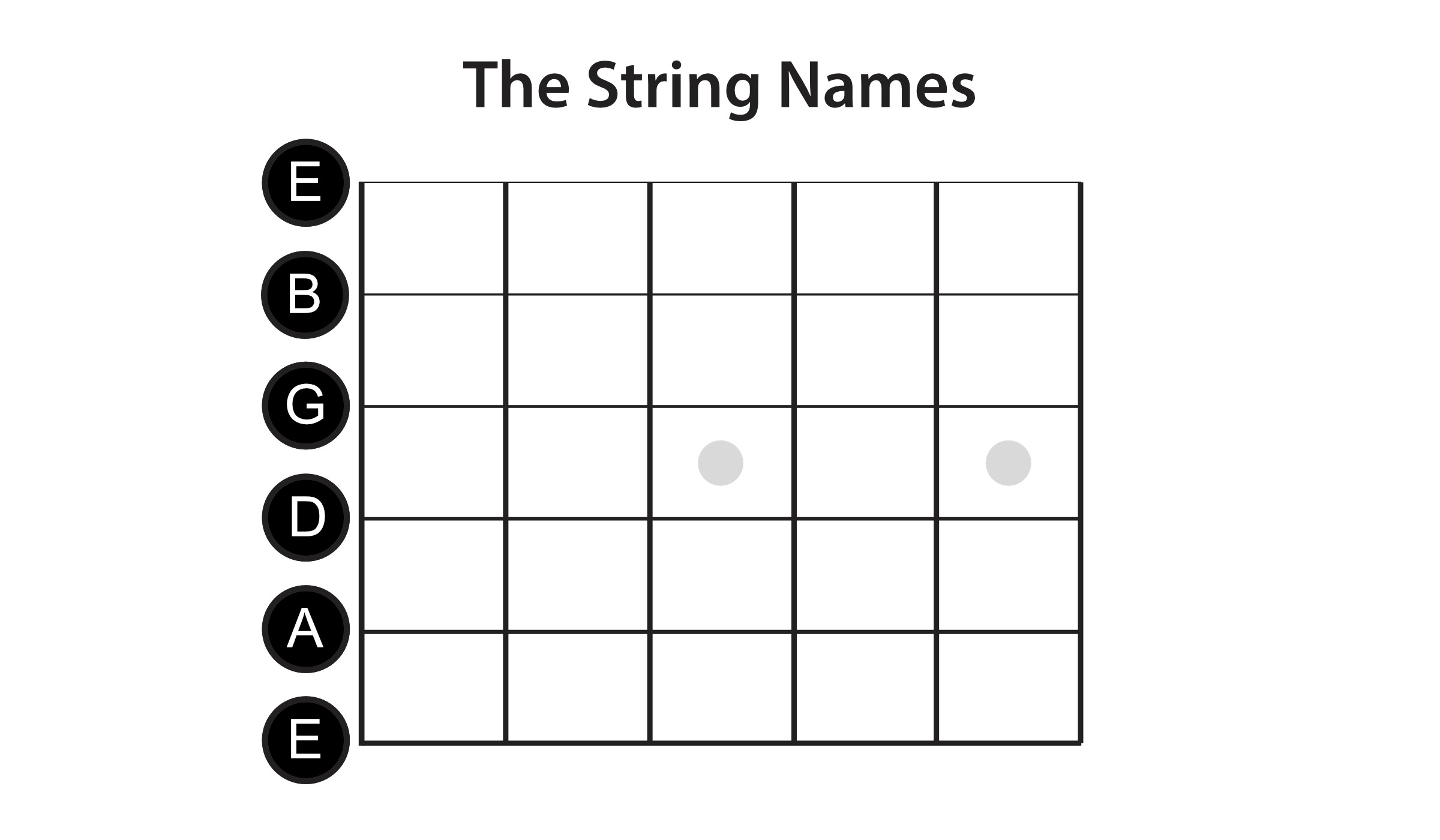 Guitar String Names
Guitar String Names
Ascending the Frets: Counting Notes on Each String
Once you know the open string notes and the musical alphabet, you can start counting up the notes as you move up the fretboard. Each fret represents a half-step increase in pitch. Starting from the open string note, each subsequent fret moves you to the next note in the musical sequence, remembering the B-C and E-F rule.
E String Notes:
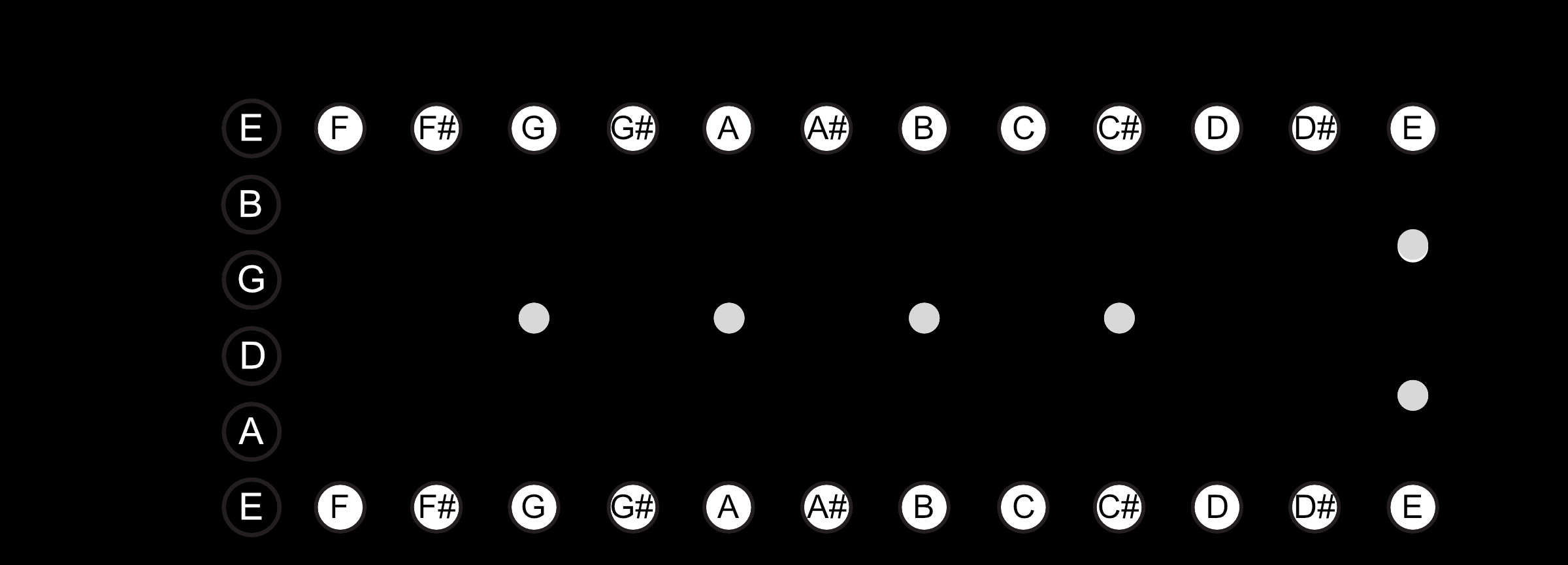 E String Note Names
E String Note Names
A String Notes:
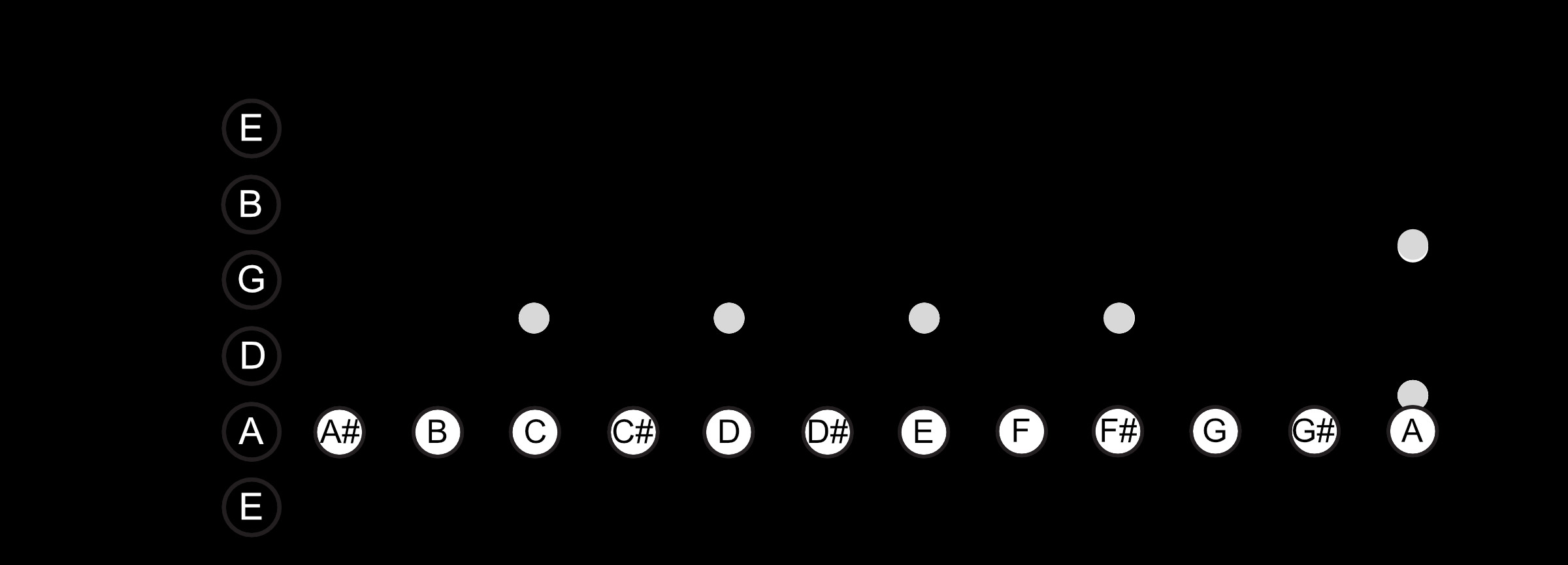 A String Note Names
A String Note Names
D String Notes:
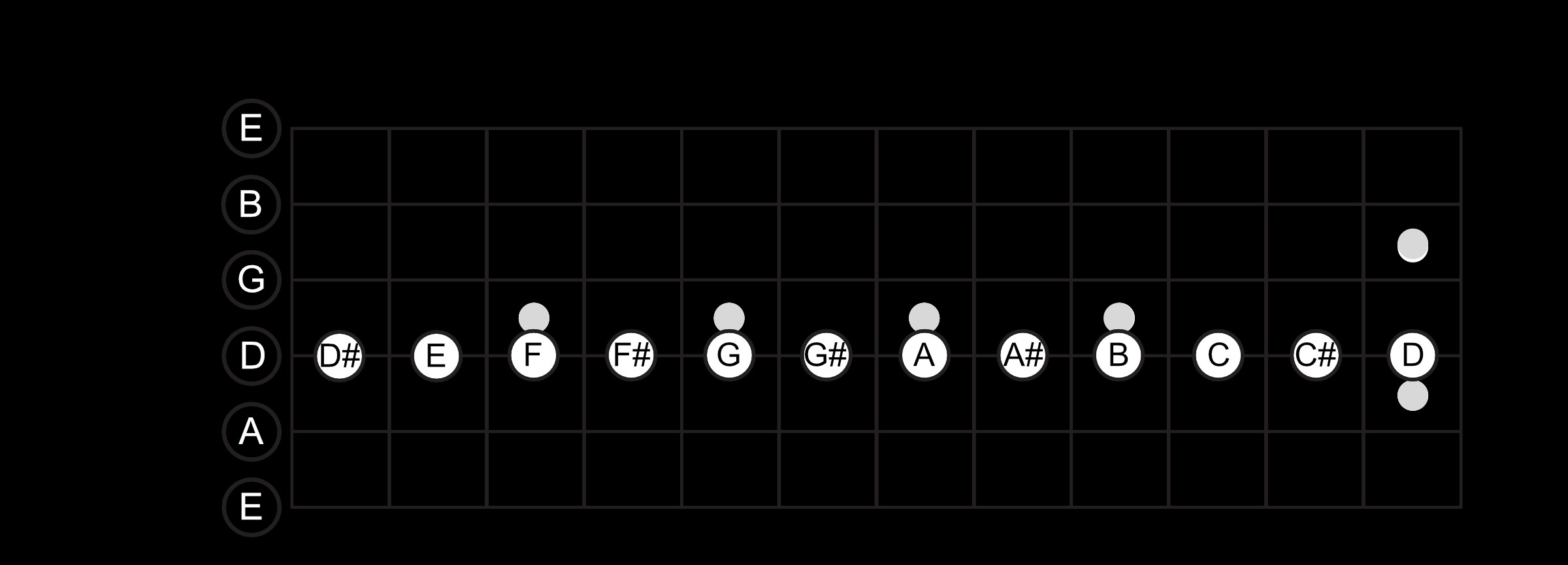 D String Note Names
D String Note Names
G String Notes:
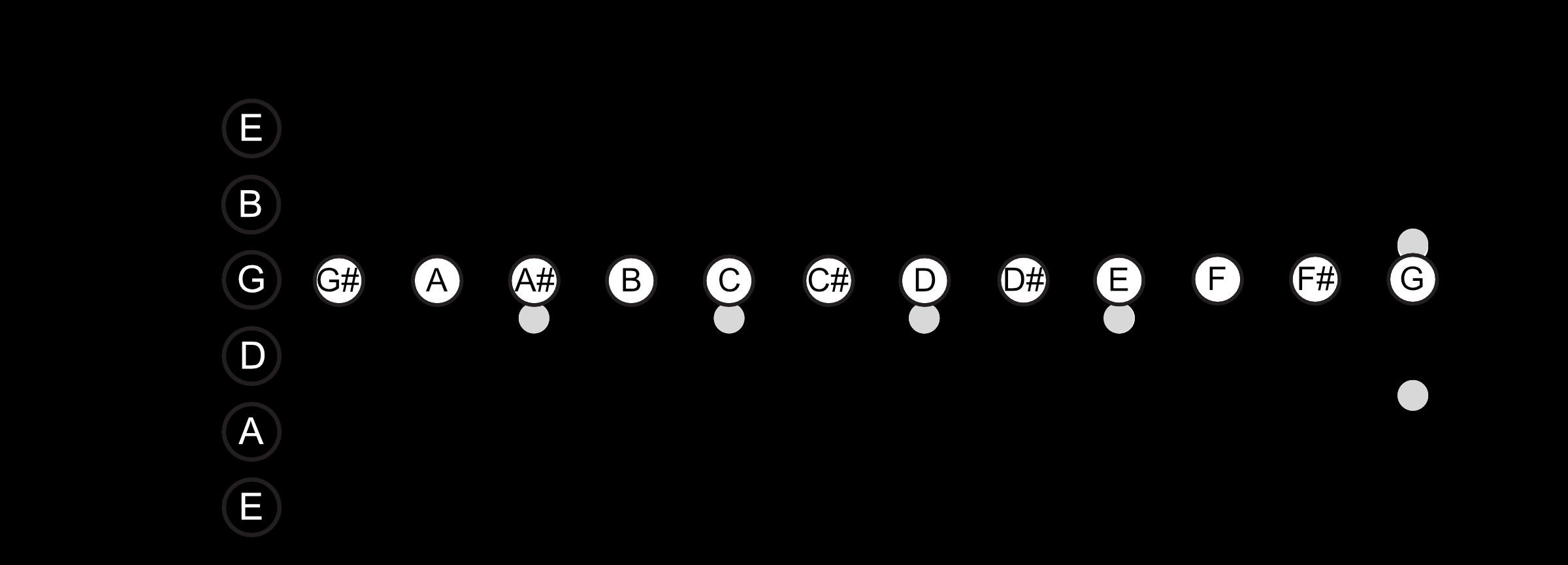 G String Note Names
G String Note Names
B String Notes:
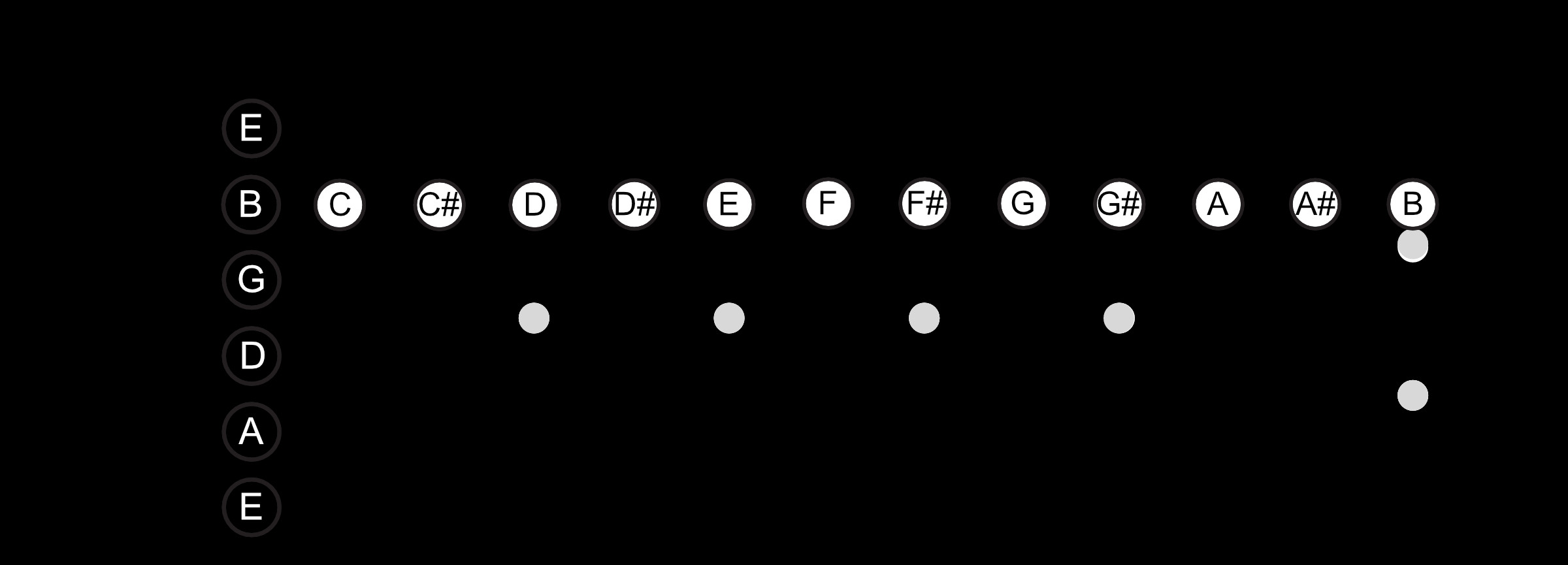 B String Note Names
B String Note Names
The 12th Fret Octave: Note Repetition
Here’s a fantastic shortcut for learning the fretboard: you only need to truly learn the notes up to the 12th fret. Why? Because at the 12th fret, the notes repeat an octave higher. For instance, on the B string, the 12th fret is B again, just an octave higher than the open B string. The 13th fret will then be C, mirroring the note at the 1st fret. This significantly reduces the amount of memorization required.
Octave Shapes: Navigating the Fretboard Efficiently
Another powerful technique is using octave shapes. Octaves are notes that are the same but at different pitches. Learning octave patterns allows you to quickly find the same note in multiple locations on the fretboard. A common and useful octave pattern involves referencing notes two strings away and two frets higher (with adjustments for the B string).
For example, to find a G note on the D string, you can reference the G note on the E string two strings below and two frets lower.
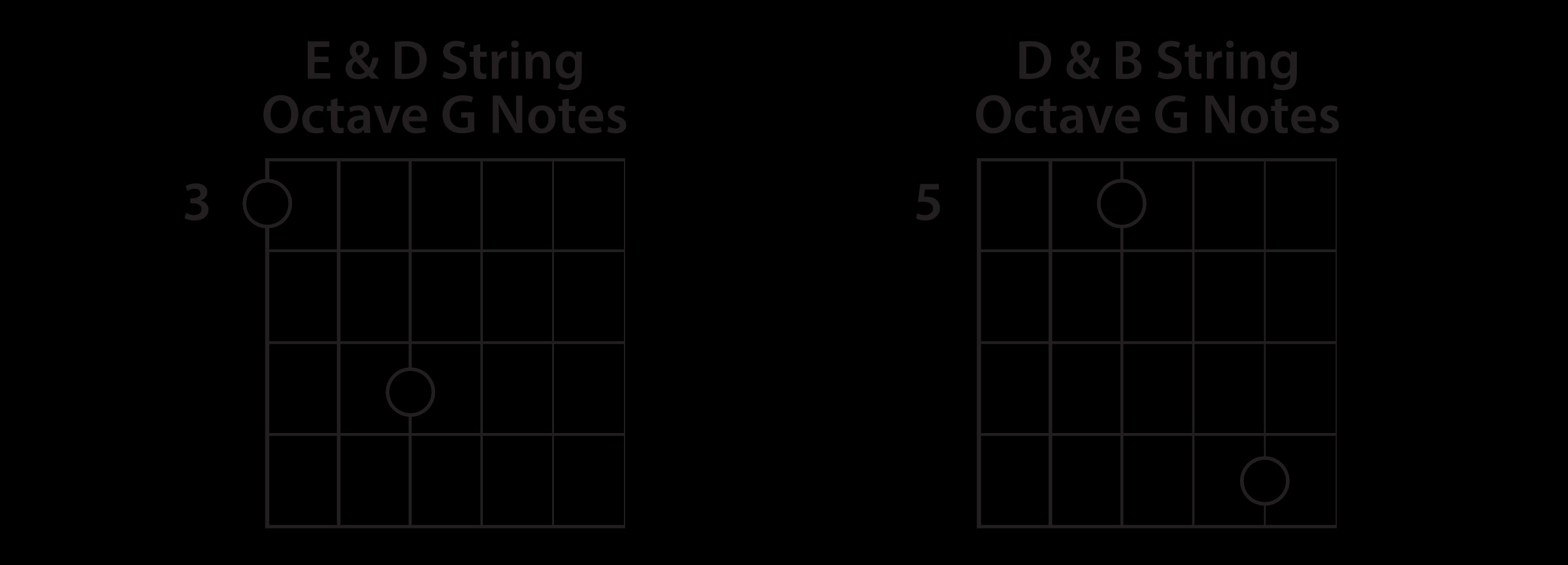 E & D String Octave Centers
E & D String Octave Centers
Similarly, you can use the A string as a reference to find notes on the G string, and then the G string to locate notes on the high E string.
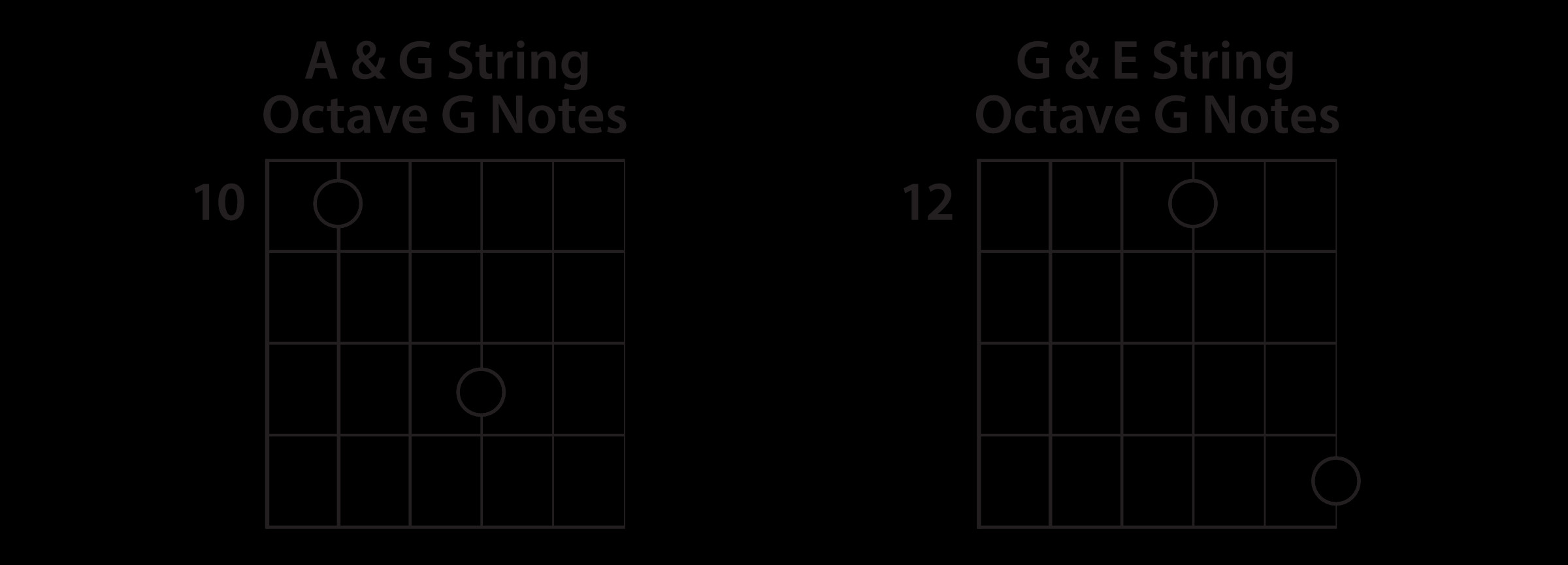 A & G String Octave Centers
A & G String Octave Centers
Putting It All Together: Start with E and A Strings
The most effective way to learn all the notes on the guitar is to start by focusing on the E and A strings. Master the notes on these two strings first. Once you have a solid understanding of the notes on the E and A strings, you can use octave shapes and your knowledge of the musical alphabet to quickly deduce the notes on the remaining strings.
By combining these techniques – understanding the musical alphabet, sharps and flats, string names, counting frets, octave repetition, and octave shapes – learning the notes on the guitar fretboard becomes an achievable and rewarding journey. Start practicing regularly, and you’ll soon be able to confidently identify any note on your guitar.
